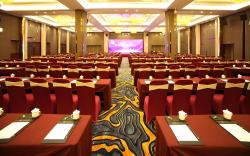Chihpinglong Archaeological Site Introduction
Chipinglong Archaeological Site is located on the western seaside of Dongju Island. The site is situated at the southwest corner of Daping settlement (near the police station) and is a gently sloping marine terrace platform. Excavations were conducted four times starting in 2001, with researchers and the local Matsu Cultural and Arts Association forming a team for the excavation and research work in the summers of 2004 and 2005. They discovered over 400 pieces of ground stone tools, pottery shards, shells, and animal bones. The stones were mainly sourced locally, consisting of granite, dacite, and andesite, as well as tuff. Over 10,000 pottery shards were unearthed, with the most being from coarse red pottery, dating back to prehistoric times, thus proving that there were people living on Dongju 6,000 years ago. Further research is needed to determine whether this site, located at an elevation of 315 meters and affected by land subsidence, served as a small settlement, burial site, agricultural field, hunting ground, tool manufacturing site, or battleground. Note: The site has become increasingly neglected over the years, and the public is advised to pay attention to safety when walking on rugged paths. Lily Park - Encountering Wild Lilies in Dongju Wild lilies were once commonly seen throughout Dongju, but due to extensive land cultivation, they have significantly decreased. Therefore, the principal of Dongju Elementary School, along with children and the community development association, worked together to cultivate them again. Lily Park was established along the path behind the Dongju Fire Station, leading to the ancient trail towards Mengao. Every spring, when the lilies end their dormancy, they bloom abundantly across the mountains in the third month of the lunar calendar.


























